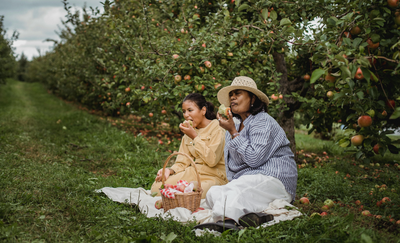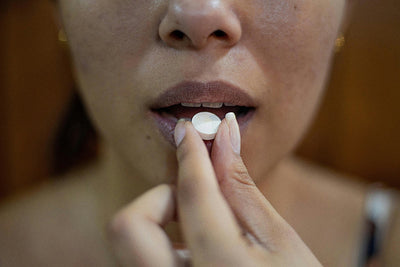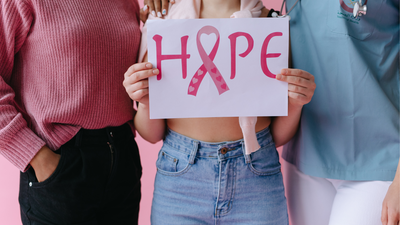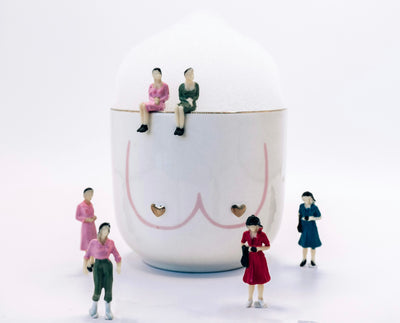How Does Breast Milk Change for Your Baby's Needs?
How Does Breast Milk Change for Your Baby's Needs?
by katie black
One of the most remarkable things about breast milk is that it changes to fit your baby’s needs. That’s right…the composition of your breast milk actually responds and adapts to meet your infant’s nutritional demands!
Breast milk composition can change from feed to feed and over longer periods of time as well. It may even change if your baby gets sick! To understand how this works, it’s important to know what’s in your milk in the first place:
Breast milk is generally made up of:
- 87% water
- 7% lactose
- 4% fat
- 1% protein
What is lactose?
Lactose is an important carbohydrate. It provides energy for a baby’s developing brain and helps with absorbing minerals. There are types of carbohydrates called “human milk oligosaccharides” (HMOs) which help grow good bacteria in the gut and protect against bad bacteria. We know there are at least 200 different HMOs.
What is fat?
Fat gives your baby energy. It also helps develop the central nervous system. Amazingly, there are over 200 types of fatty acids in breast milk.
What is protein?
Breast milk has over 400 different proteins. Protein is both a nutrient and helps other nutrients get absorbed. It also supports a healthy immune system and helps fight bad bacteria.
There are tons of other molecules that also help with development, immunity, making the microbiome, adjustment outside the womb, and more.
How does composition change during feeding?
The composition of breast milk changes during each nursing session. The first milk that is expressed is called foremilk. Foremilk is thinner and higher in lactose and is good for quenching your baby’s thirst.
Then comes the more fatty hindmilk. The change in composition is caused by the suckling action on the breast. This means how long you nurse each session will affect the nutrition your baby receives. The amount of fat in your milk also depends on how full your breast is. The fuller it is, the less fat content it will have because it will be more diluted.
How does breast milk change with age?
There are three breast milk stages: colostrum, transitional, and mature milk.
Colostrum:
This is your milk in the first few days after giving birth. It’s thicker and yellower in color, and smaller in volume, but more concentrated in the things your newborn needs—this is where we get the phrase “liquid gold”. Colostrum’s purpose is to create a thriving immune system so it is full of antibodies, good bacteria, and other protective cells. There are almost twice as many HMOs in colostrum as there are in mature milk!
Transitional milk:
For a few weeks after colostrum you’ll express transitional milk. You may have heard this stage described as your milk “coming in”. The volume increases, and your breasts may grow larger in size. This milk is creamier due to higher fat and lactose content. Its purpose is to help with your baby’s development.
Mature milk:
After around four weeks, your milk is mature. Its composition will stabilize and will be high in proteins, lactose, and other vitamins/minerals. However, it may still vary from feed-to-feed and with your baby’s growth.
How does breast milk change when your baby is sick?
Researchers have come up with the amazing hypothesis that babies are able to communicate their immune needs to momma via breastfeeding!
This happens through a process called “baby spit backwash”. During breastfeeding, the suckling motion creates a vacuum-like pressure making a mixture of breast milk and baby saliva go back up into mom’s nipple. This signals to mom’s body to produce more immune cells (called leukocytes) in her milk which are passed onto her baby and help fight infection. Leukocyte levels in breast milk are shown to spike when babies are sick!
Breastfeeding is a dynamic process that responds to your infant’s needs, both daily and over time—what is cooler than that?!
To stay up-to-date on other amazing research that is being done on breastfeeding and breast milk, consider signing up for our newsletter. And if you’re curious about what exactly is in your breast milk, you can get your milk tested here.
Related reading: The Benefits of Skin to Skin Contact.
Sources:
https://familyandconutrition.com/breastmilk/
https://onlinelibrary.wiley.com/doi/full/10.1038/cti.2013.1






